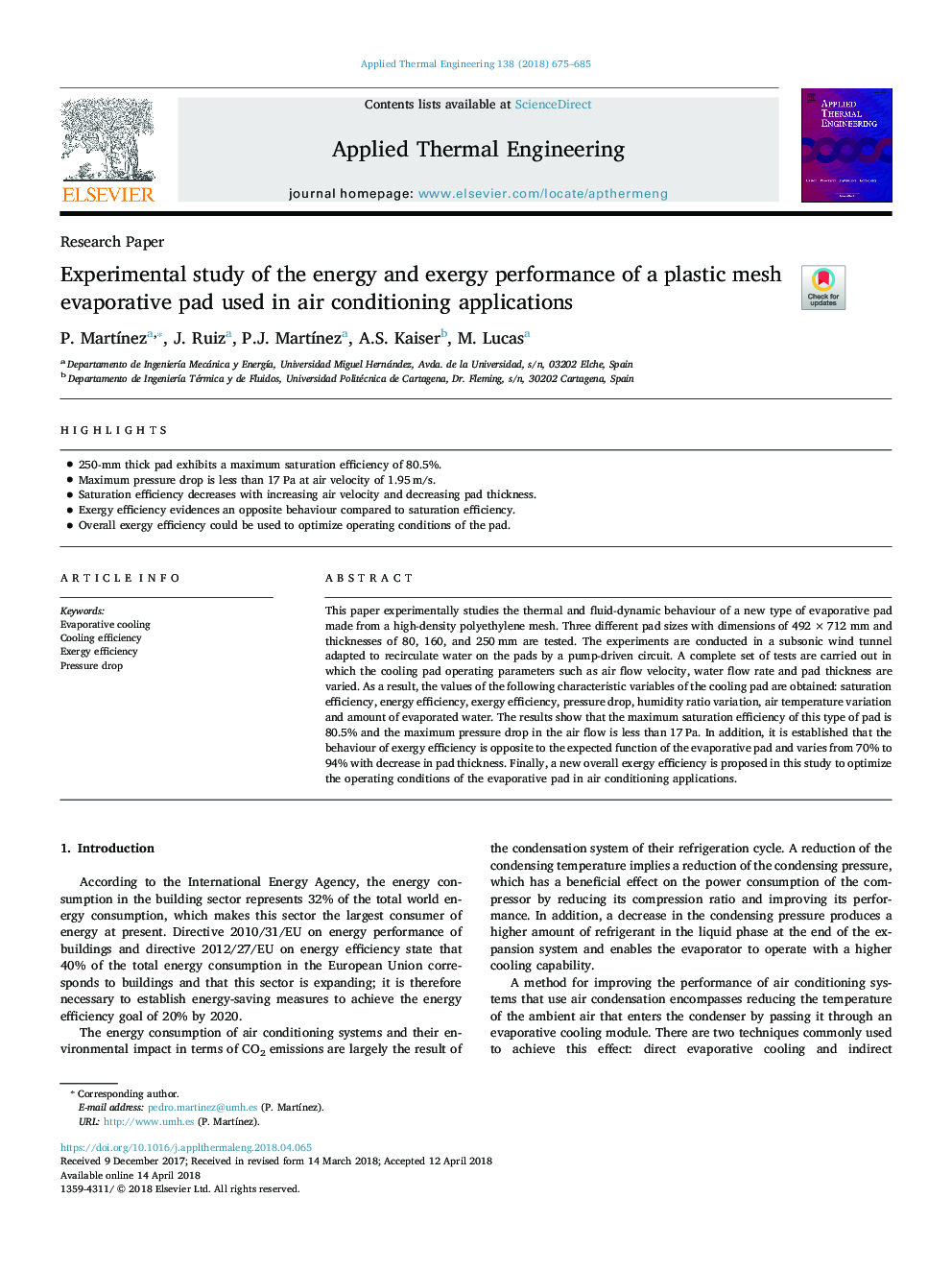| Article ID | Journal | Published Year | Pages | File Type |
|---|---|---|---|---|
| 7045321 | Applied Thermal Engineering | 2018 | 11 Pages |
Abstract
This paper experimentally studies the thermal and fluid-dynamic behaviour of a new type of evaporative pad made from a high-density polyethylene mesh. Three different pad sizes with dimensions of 492â¯Ãâ¯712 mm and thicknesses of 80, 160, and 250â¯mm are tested. The experiments are conducted in a subsonic wind tunnel adapted to recirculate water on the pads by a pump-driven circuit. A complete set of tests are carried out in which the cooling pad operating parameters such as air flow velocity, water flow rate and pad thickness are varied. As a result, the values of the following characteristic variables of the cooling pad are obtained: saturation efficiency, energy efficiency, exergy efficiency, pressure drop, humidity ratio variation, air temperature variation and amount of evaporated water. The results show that the maximum saturation efficiency of this type of pad is 80.5% and the maximum pressure drop in the air flow is less than 17â¯Pa. In addition, it is established that the behaviour of exergy efficiency is opposite to the expected function of the evaporative pad and varies from 70% to 94% with decrease in pad thickness. Finally, a new overall exergy efficiency is proposed in this study to optimize the operating conditions of the evaporative pad in air conditioning applications.
Related Topics
Physical Sciences and Engineering
Chemical Engineering
Fluid Flow and Transfer Processes
Authors
P. MartÃnez, J. Ruiz, P.J. MartÃnez, A.S. Kaiser, M. Lucas,
